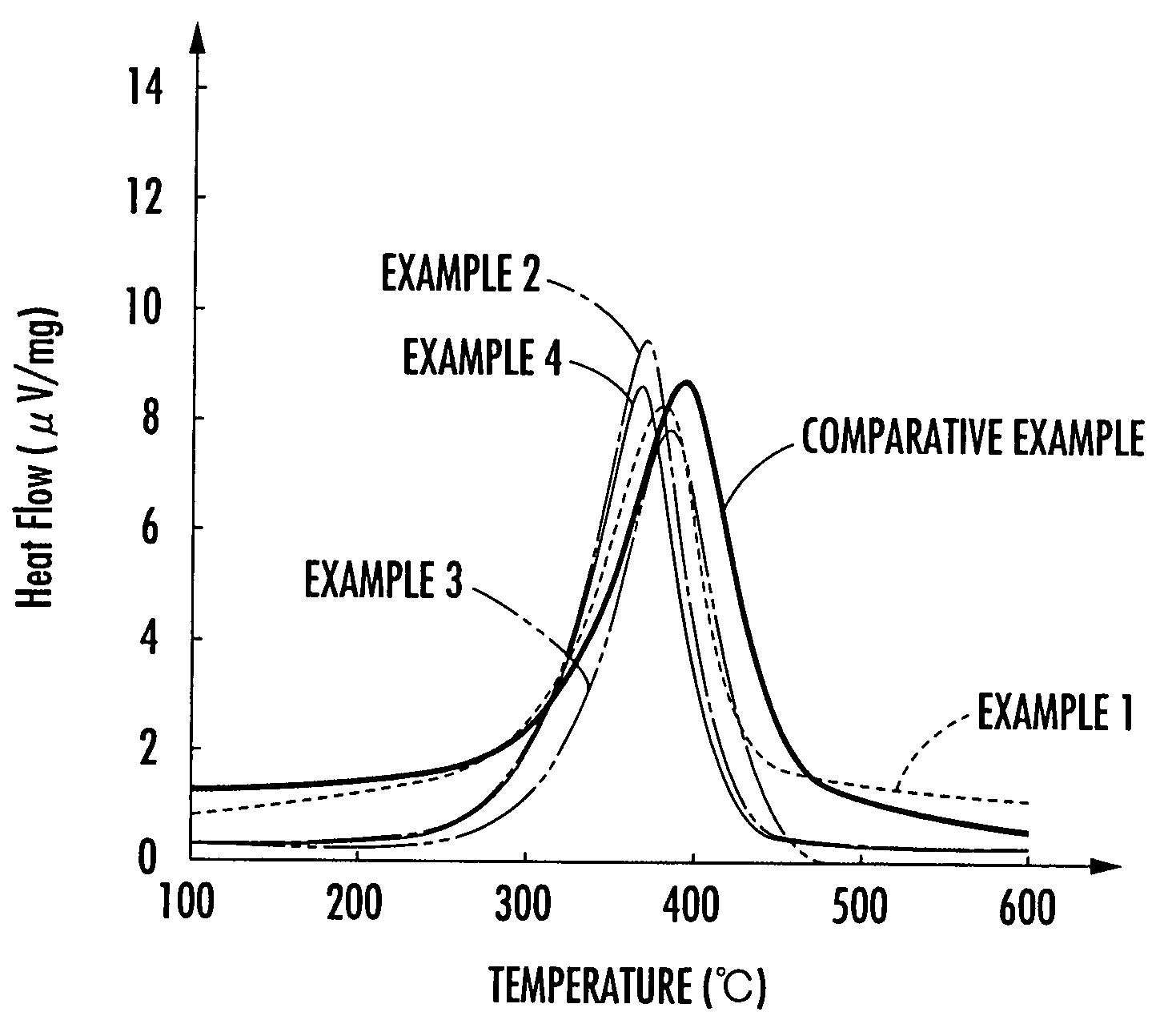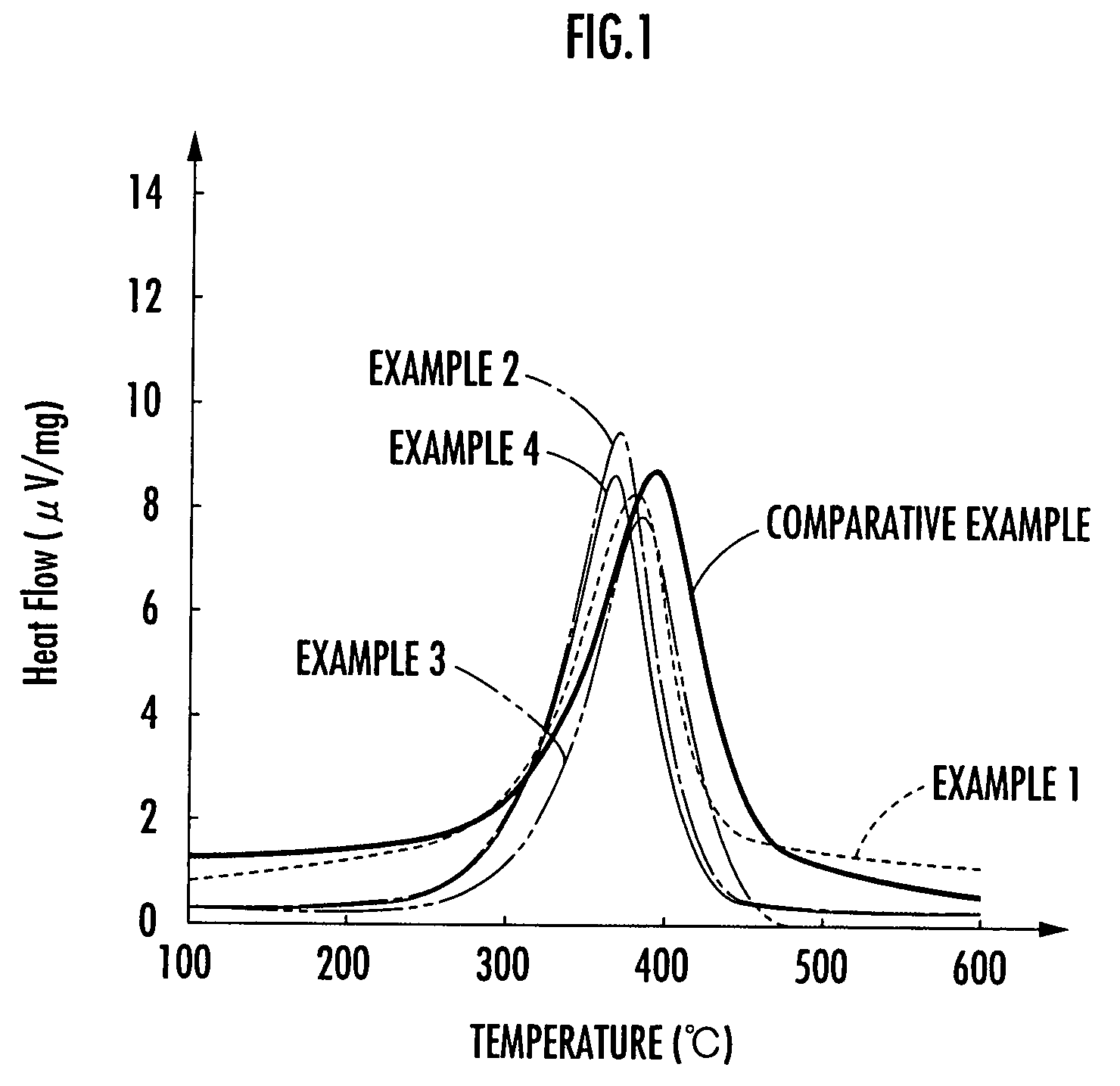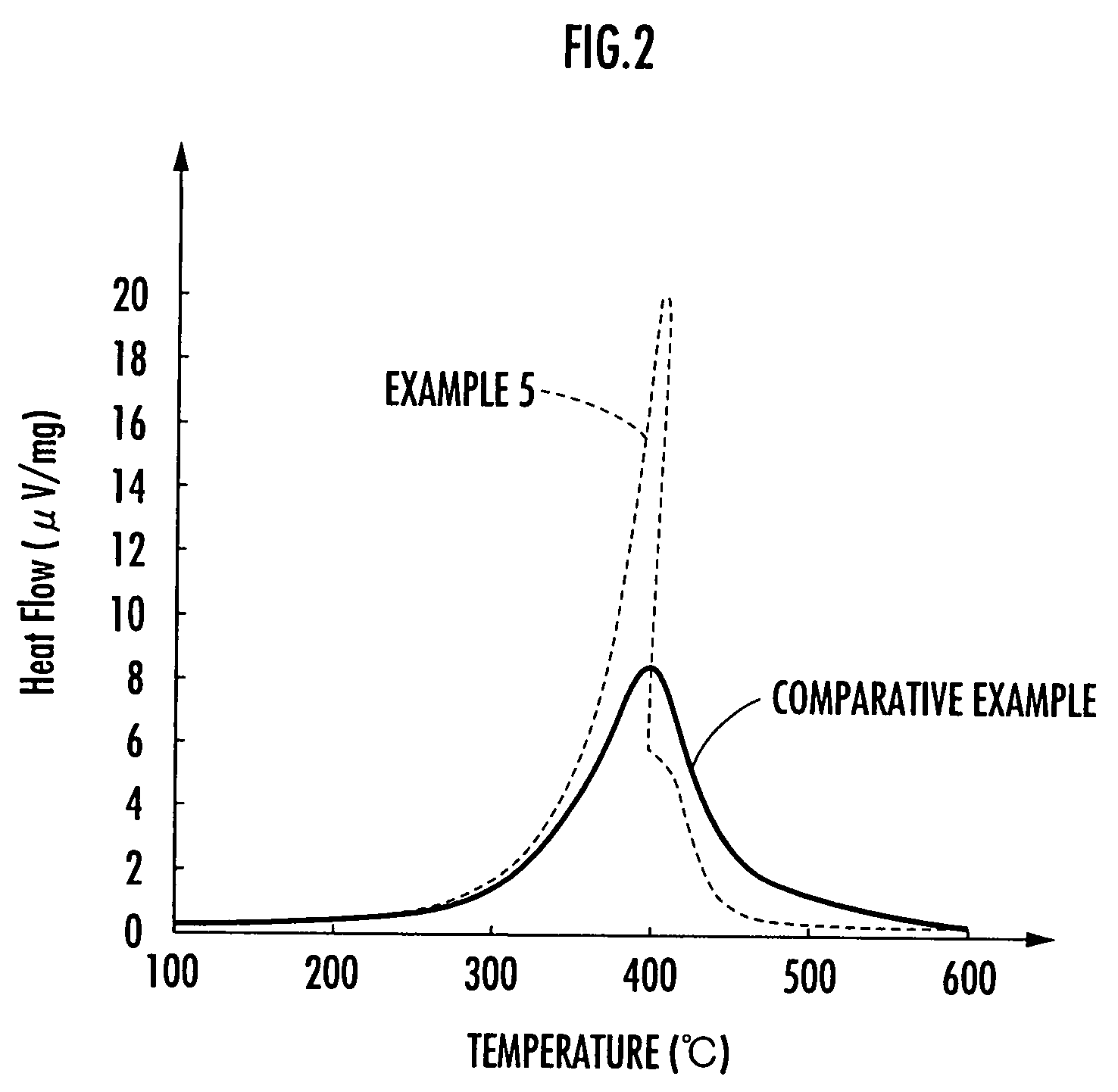Oxidation catalyst for cleaning exhaust gas
a technology of oxidation catalyst and exhaust gas, which is applied in the direction of physical/chemical process catalyst, metal/metal-oxide/metal-hydroxide catalyst, separation process, etc., can solve the problem of difficult to maintain the crystal lattice, and achieve excellent catalytic activity
- Summary
- Abstract
- Description
- Claims
- Application Information
AI Technical Summary
Benefits of technology
Problems solved by technology
Method used
Image
Examples
example 1
[0036]In this Example, first, yttrium acetate, manganese nitrate, and anatase type titanium oxide were used in such amounts that a molar ratio thereof of 1:0.95:0.05 is obtained, and mixed in a ball mill for 5 hours, followed by primary firing at 250° C. for 30 minutes, at 300° C. for 30 minutes, and at 350° C. for one hour. Ethanol was then added to the resultant material from the primary firing process, which was then subjected to wet grinding using a ball mill before drying, followed by secondary firing at 1,000° C. for one hour to provide a powder of the composite metal oxide represented by YMn0.95Ti0.05O3.
[0037]The composite metal oxide powder obtained in this Example was then subjected to differential thermal analysis (DTA) for the activity evaluation thereof. The differential thermal analysis was performed by using the composite metal oxide powder obtained in this Example as a catalyst for cleaning exhaust gas to mix 2.5 mg of carbon black with 50 mg of the catalyst, followed...
example 2
[0039]In this Example, the composite metal oxide represented by YMn0.95Nb0.05O3 was obtained just as described in Example 1 except for the use of niobium oxide in place of anatase type titanium oxide.
[0040]A relationship between heat flow and temperature was then determined just as described in Example 1 except for the use of the composite metal oxide obtained in this Example as a catalyst for cleaning exhaust gas. The result is shown in FIG. 1.
example 3
[0041]In this Example, the composite metal oxide represented by YMn0.95Ta0.05O3 was obtained just as described in Example 1 except for the use of tantalum oxide in place of anatase type titanium oxide.
[0042]A relationship between heat flow and temperature was then determined just as described in Example 1 except for the use of the composite metal oxide obtained in this Example as a catalyst for cleaning exhaust gas. The result is shown in FIG. 1.
PUM
| Property | Measurement | Unit |
|---|---|---|
| boiling point | aaaaa | aaaaa |
| catalytic activity | aaaaa | aaaaa |
| temperature | aaaaa | aaaaa |
Abstract
Description
Claims
Application Information
 Login to View More
Login to View More - R&D
- Intellectual Property
- Life Sciences
- Materials
- Tech Scout
- Unparalleled Data Quality
- Higher Quality Content
- 60% Fewer Hallucinations
Browse by: Latest US Patents, China's latest patents, Technical Efficacy Thesaurus, Application Domain, Technology Topic, Popular Technical Reports.
© 2025 PatSnap. All rights reserved.Legal|Privacy policy|Modern Slavery Act Transparency Statement|Sitemap|About US| Contact US: help@patsnap.com



